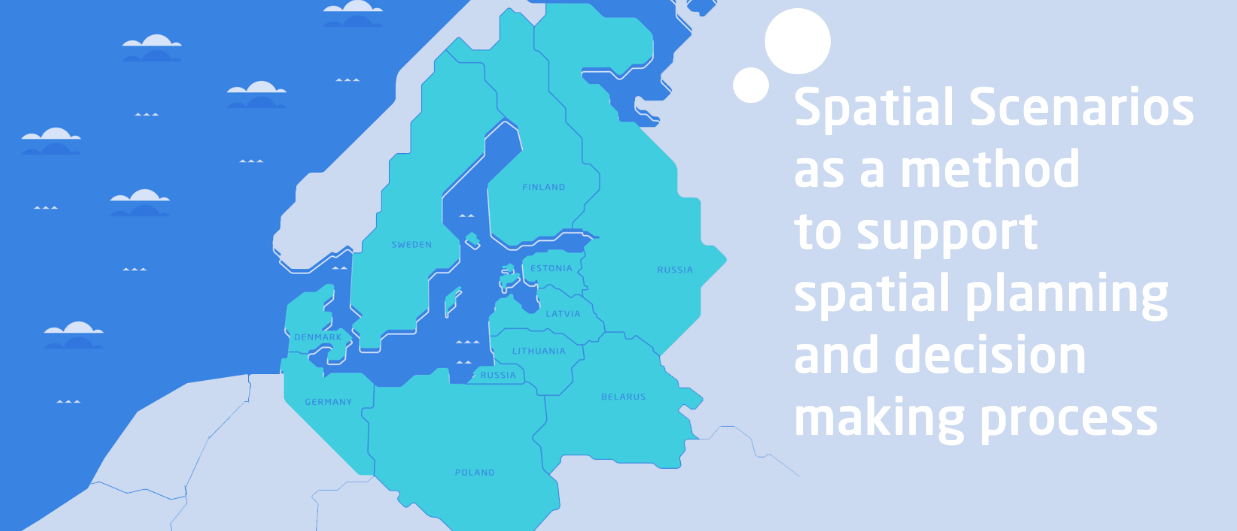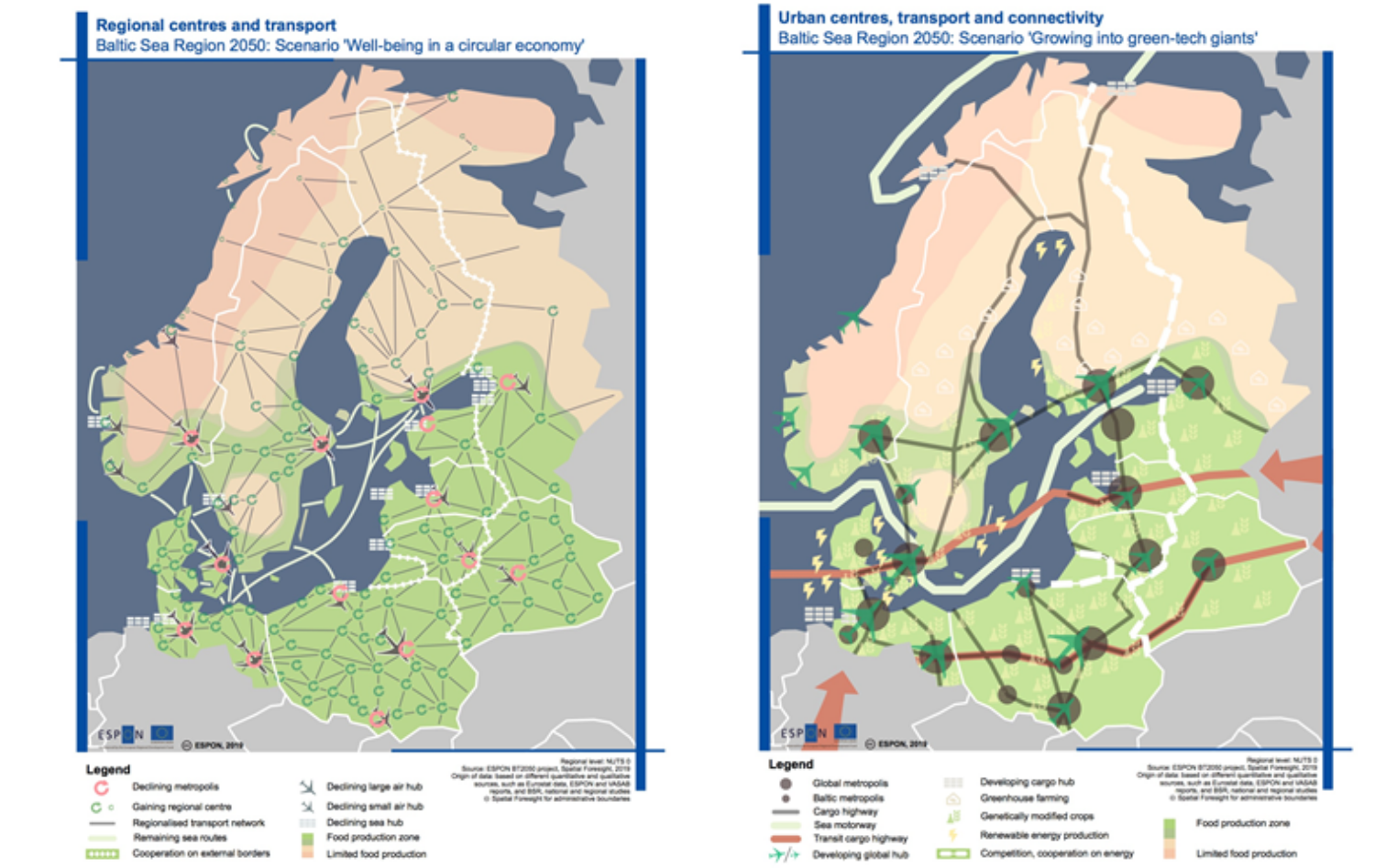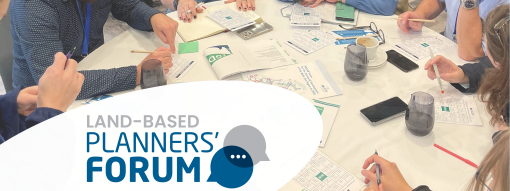Possible and Desired Territorial Futures for the Baltic Sea Region 2050
How do we plan for a better future? What kind of tools could help us make better, more sustainable decisions? How can we be better prepared for unexpected developments? Applicability and lessons learned from spatial scenarios method as well as integration of terrestrial and maritime spatial planning were discussed in a thrilling online webinar this autumn.
Territorial scenarios are an important tool to show synergies and trade-offs between spatial goals and priorities spelled out in various strategic documents. Scenarios and territorial scenarios in particular can be a useful tool to further inform and support policy makers in preparing sound policies and shaping future.
Workshop “Where Land and Water Meets in the Baltic Sea Region 2050” took place on 15 September 2020 as part of the 11th Annual EU Strategy for Baltic Sea Region (BSR) Forum and introduced 6 different scenarios and each of them provided valuable lessons. Three territorial scenarios were developed within ESPON BT2050 project 2018-2019. In addition, analysis of the future trends were carried out and presented. Future scenarios for the Finnish marine areas and the Baltic Sea 2050 were developed as part of the Finnish Maritime Spatial Planning process (supported by European Marine and Fisheries Fund). Although developed before pandemics, all scenarios clearly showed some of the characteristics that we have been experiencing during the COVID-19 outbreak.
The ESPON BT 2050 spatial scenarios:
1) A quantitative baseline scenario showed the most likely development scenario of the BSR based on the current and past development trends. Scenario is indicating that the gap between the East and the West will narrow, however the disparities will remain in place between fast growing urban and rural areas. Still, BSR will move closer to the EU average and cohesion in 2050;
2) “Well-being in a Circular Economy” imagines a slow life in the BSR – slow and local food, slow and lasting fashion, slow and responsible production. People of the BSR are less stressed, commute less and consume less so the quality of life increases. Importance of regional centres in the polycentric manufacturing network has increased and new employment opportunities arise mainly outside the big cities.
3)“Growing into Green-tech Giants” imagines a rapid eco development in the BSR where Green is the New Black. Big metropolitan areas thrive and technological growth is combined with less emissions leading to guilt free consumption.
Written by Liene Gaujeniete,
Spatial Planning Expert in VASAB Secretariat
Finnish maritime scenarios:
4) “Dancing with Big Businesses” scenario describes a Baltic sea in times where market liberalisations have taken place in EU and economic growth is the main driver. Countless offshore windfarms and the Helsinki-Tallinn Tunnel are built.
5) “Profitability under the Environment’s Terms” is a future in which recreation and environmental protection thrive in the Baltic Sea near Finland, consumption decreases and sustainable choices are being made.
6) In the “Baltic Sea of Restrictions and Tensions” scenario Baltic Sea becomes a playing field for superpowers, EU strengthens their joint environmental and energy policy, tension with Russia increases.
Except for the baseline scenario, scenarios are building narratives about possible, alternative or desired future, they challenge discussions, trigger out of the box thinking. Scenarios allow us to see that different futures are possible. During scenario building various needs have to be put on the map and interests of others have to be considered. Scenarios can help facilitating multidisciplinary process and tackling complex issues. Awareness of restrictions can be learned and depicted in a clear way, e.g. never-ending growth is impossible if we want to protect the environment. Scenario building as a method is very helpful in participatory planning, it creates commitment to the plan in long run. In addition, scenarios form a context in which strategies and policies can be tested.
Clearly, there are so many striking similarities in the scenarios on land and in the sea that shows how interdependent the processes are and the necessity to choose an integrative approach for terrestial and maritime planning. Profitability under environments terms extend the well-being in the circular economy as well as Growing into Green-Tech Giants and Dancing with the Big Businesses go hand in hand.
In the context of pandemics we can observe that some of the foreseen future trends such as eHealth development, remote working, alternatives to mass tourism, have accelerated. However, indications are that in a long run impacts of the pandemics will be minor. This highlights that if we want to change territorial development, we have to introduce radical changes with the policies and plans we are developing.
The given examples of scenarios have been or will be used to elaborate strategic spatial planning documents. The Finnish Maritime Scenarios have served as input for the Finnish Maritime Spatial Plan 2030, and the ESPON BT2050 scenarios will serve as an input in updating the VASAB Long-term Perspective for the Territorial Development of BSR. They can also be used for the development of national, regional and even local strategic planning documents of the Baltic Sea Region countries.
If the planning process is for us to prepare for the future, the pandemic has made us think of the various aspects and possibilities for which we have to prepare when developing a plan. Spatial scenarios is an instrument we can enhance to accomplish this task and challenge better.
Speakers of the workshop:
Dr Kai Böhme (moderator) and Maria Topsidou, Spatial Foresight, Luciane Aguiar Borges, Nordregio, Klaus Spiekermann, Spiekermann & Wegener, Tiina Tihlman, the Finnish Ministry of Environment and Johanna Schreck, CAPFUL
More information about the workshop – agenda and presentations can be obtained here.
Register for the 11th Annual EUSBSR Forum here.
ESPON BT2050
Scenarios for Maritime Areas in Finland 2050





